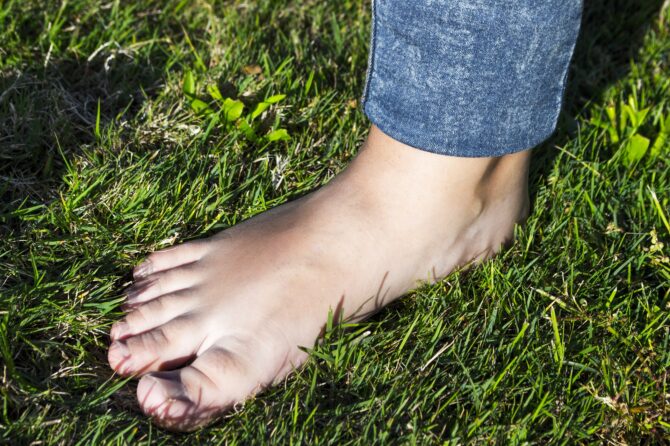
The Truth About Going Barefoot
When it comes to going barefoot, many people believe in the power of nature and say it’s a completely healthy thing to do. On the other side, many people believe in the power of shoes for protecting feet from harm. Who’s right? Some of these truths may surprise you.
Truth: Wearing shoes is a modern-day convenience.
Millions of people worldwide still go without shoes on a daily basis, many of them by choice. Research on those who go without shoes shows that their feet are often just as healthy as those who constantly wear them.
Truth: Shoes aren’t a magical solution that protect feet from all trouble.
Most problems directly attributable to wearing shoes happen because the user is wearing the wrong size or shape for their unique foot needs. Common problems associated with wearing the wrong shoes include calluses, bunions, hammertoes, and other foot deformities.
Truth: Introduce yourself slowly when first going barefoot.
Start going barefoot for only short periods of time at first so the skin on the soles of your feet will stiffen and grow thicker, which makes them more resistant to cuts and injury. You’ll also notice differences in your gait and stability. Avoid vigorous activity until your strength and balance have improved.
Truth: When to go barefoot is very much a matter of practicality and sense.
Use good judgment when choosing to go barefoot. Bare feet in winter=bad idea. Bare feet around a construction site=bad idea. Bare feet during sports=bad idea. Be smart and wear shoes when the conditions or activity warrants.
Truth: It’s not okay for just anyone and everyone to go barefoot.
If you have certain conditions, especially diabetes, it is very important that you continue to wear shoes, even at home. Diabetes, peripheral neuropathy, and vascular conditions can all diminish sensitivity, meaning a minor, unnoticed injury like a cut or stubbed toe can lead to a major complication.
Truth: You’re allowed to go barefoot in more places than you’d think.
Other than government buildings and some places mandated by OSHA for safety, there are very few laws and regulations barring people from going barefoot in public places. When you see that sign in the window that says “No shirt, no shoes, no service,” it’s simply that establishment’s decision.
Choosing a barefoot lifestyle is not an easy decision. Talk to your FAAWC provider today to discuss when and where it’s suitable for you to go barefoot.
Leave a reply